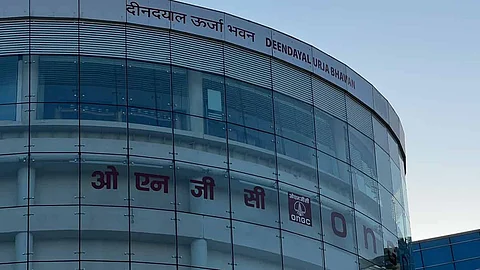

New Delhi: Moving to protect its profitability, Oil and Natural Gas Corporation (ONGC) has set in motion a comprehensive cost optimisation programme that is aimed at cutting costs by 15 percent by FY2026-27. In tandem with cost-reduction, ONGC is also focussing on tackling the challenge of declining production from its maturing fields by exploring engaging Technical Service Providers (TSP) for several other important fields in western and eastern offshore projects to boost production.
Follow Energy Watch on X
Speaking to reporters during a media interaction on Monday, ONGC’s Director (Production) Pankaj Kumar said, “We were working on this (cost-optimisation) for the last 1.5-2 years and a lot of internal restructuring was done for that purpose only. And now we are almost sure that, yes, this will give us benefit.” On being asked if the PSU will look at reducing the manpower, Kumar said that ONGC is not considering layoffs to cut costs. “We need to look at how to prioritise things so that we get more volumes at a lesser cost. That becomes more important for us,” the Director (Production) added.
The company’s capital expenditure currently stands at around Rs 35,000 crore and operating expenditure at Rs 26,000 crore annually. ONGC has identified Rs 4,300 crore worth of cost-reduction opportunities already under implementation and an additional Rs 5,000 crore potential under analysis. Together, these add up to about Rs 9,300 crore, equivalent to 15 percent of total capex and opex.
A dedicated Cost Council has been constituted to institutionalise the savings process, track accountability, and ensure sustained reductions. The initiatives under way include offshore resource optimisation, increasing drilling efficiency, logistics route optimisation, inventory rationalisation, and fuel-efficiency improvements.
Oil prices have reduced at a compounded annual growth rate (CAGR) of 5 percent over the last five years. With demand for oil peaking, increased oil supply coming into the markets, and the energy transition cycle kicking in, oil prices are expected to remain subdued. ONGC dubbed its cost-optimisation programme as a “strategic journey” to prepare itself for a future with USD 60/barrel crude price environment.
ONGC is coupling cost-cutting with a production push to reverse output decline from its ageing assets. The company has already reported a 1 percent year-on-year increase in crude oil production in FY25, with incremental growth of 0.3–0.5 percent in Q1 and Q2 FY26.
The state-run major has engaged bp as Technical Service Provider (TSP) for the Mumbai High (MH) field, targeting a 44 percent increase in oil output (from 45.47 to 65.41 MMT) and an 89 percent jump in gas production (from 70.4 to 112.6 BCM) over the next decade, unlocking up to USD 15 billion in additional revenue. Similar partnerships are being explored for other key offshore fields in both western and eastern regions to boost reservoir performance and recovery.
At the KG-DWN-98/2 deepwater block, ONGC has roped in bp as a Subject Matter Expert (SME) to diagnose well-performance issues and identify interventions for production improvement. “The issue with KG 98/2 is that we have not been able to achieve peak production. Though the gas production from the first fleet is stable, it is not declining. But again, it is less. In case of oil, we started with almost 35,000 barrels of oil per day. Currently we are little less than 35,000. So, this is an issue and that is why we need a subject matter expert (SME),” Kumar said.
The ONGC board has also approved a joint development plan for the Combined Western Offshore Development Project (CWODP), merging eight projects with a combined capex of Rs 13,000 crore and opex of Rs 4,000 crore. The consolidated plan is expected to yield over 12 MMT of incremental oil and 13 BCM of gas in the coming years.
As part of its structural reforms, ONGC is scaling up its Pipavav Supply Base (PSB) to handle around two-thirds of the western offshore workload, a move projected to unlock Rs 1,000 crore in annual savings.
The dual-port strategy, which reduces vessel turnaround time, optimises route planning, and lowers non-productive rig time, is expected to deliver tangible and intangible efficiency gains across offshore operations.
Follow Energy Watch on LinkedIN
Kumar said ONGC’s cost-optimisation journey is designed not merely to save expenses but to enable structural agility for reinvestment in high-return projects. The company is also executing a fast-track trading strategy to build India’s “premier, globally competitive trading entity,” targeting USD 1 billion in annual value addition.
